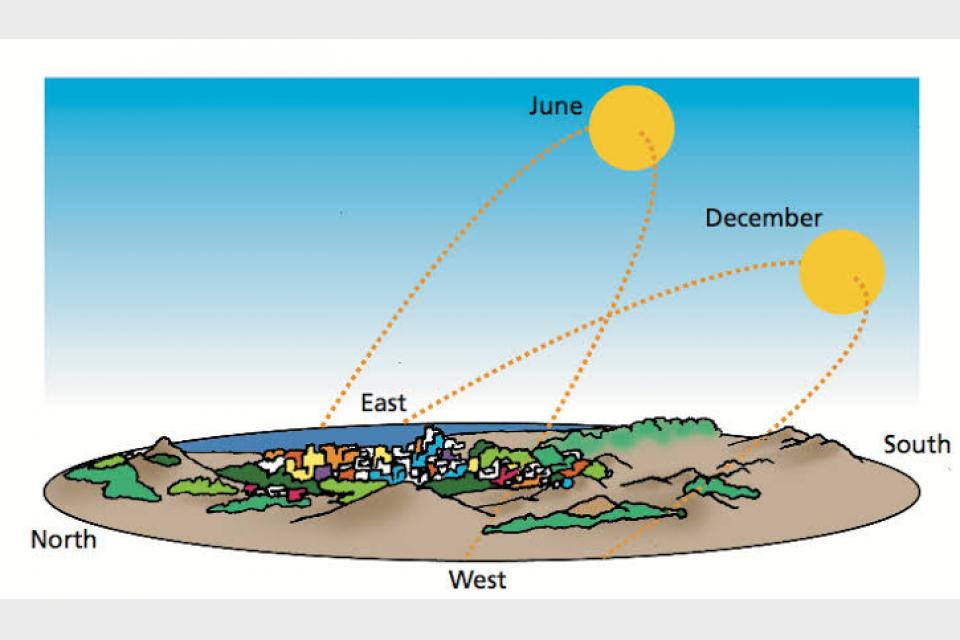In meteorology, Earth’s winter season for the Northern Hemisphere and summer season for the Southern Hemisphere began on Dec. 1, 2021. However, the December solstice brings in the astronomical winter and summer seasons, respectively, for the two hemispheres of our planet. This will happen on Dec. 21 at 15:59 UTC, which is 9:59 a.m. CST in the United States.
Summer solstice explanation
Solstices come twice a year. For the Northern Hemisphere, the summer (June) solstice occurs around June 20-21, and the winter (December) solstice happens around Dec. 21-22. At the solstice, the Sun’s path appears farthest north or south, depending on which half of the planet you’re on. Seasons change on Earth because the planet is slightly tilted on its axis as it travels around the Sun.
Earth’s axis may be imagined as an imaginary pole going right through the center of our planet from “top” to “bottom.” Earth spins around this pole, making one complete turn each day. That is why we have day and night.
Earth's seasons
Click to view larger. Credit: NASA/Space Place
Although the tilt of the Earth as compared to the plane of its orbit around the Sun is more or less constant (23.5˚), at the December solstice, the Northern Hemisphere receives the most indirect sunlight, causing cooler temperatures. The Southern Hemisphere receives the most direct sunlight, causing warmer temperatures, so it is summer there. At the June solstice, this effect reverses and the Northern Hemisphere receives the most direct sunlight, causing warmer temperatures, and the Southern Hemisphere receives the most indirect sunlight, causing cooler temperatures.
The December solstice brings the shortest day and longest night of the year for locations in the northern half of the globe, like the U.S., while the southern half of the globe is experiencing its longest day and shortest night. Therefore, all locations north of the equator see daylength shorter than 12 hours and all locations south see daylength longer than 12 hours.
After the winter solstice in the Northern Hemisphere, the days will get longer and the nights shorter until the summer solstice on June 21, 2022, when things reverse. The March equinox on March 20, 2022, will mark the beginning of the astronomical spring season and the September equinox on September 22, 2022, will mark the beginning of astronomical fall.
The ancient cultures knew that the Sun’s path across the sky, length of daylight, and location of the sunrise and sunset all shifted in a regular way throughout the year. Additionally, people built monuments, like Stonehenge in England and the Torreon in Machu Picchu, Peru, to follow the Sun’s annual progress and predict its movements.
Today, we have even more information about the universe, and we celebrate the solstice as an astronomical event caused by Earth’s tilt on its axis and its motion in orbit around the Sun.
No matter where you are on Earth’s globe – this is your time to celebrate this seasonal change!
by Lance D. Davis









